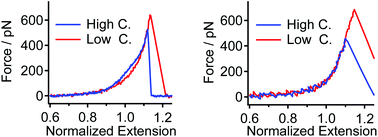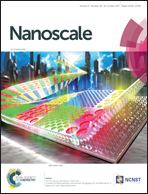Effects of stereo-regularity on the single-chain mechanics of polylactic acid and its implications on the physical properties of bulk materials†
Abstract
The material properties of polylactic acid (PLA) are largely determined by its stereo-regularity (tacticity). To find out the origin at the molecular level, the single-chain mechanics of poly-L-lactic acid (PLLA) and poly-D,L-lactide (PDLLA) were comparatively investigated by single-molecule atomic force microscopy (AFM). At a low concentration, PLLA adopted a random-coil conformation in a good solvent. At a high concentration, however, the PLLA chain can be induced into a helix, which consumed additional energy during unfolding by further stretching. Due to the random arrangement of L- and D-repeating units in the PDLLA chain, PDLLA adopts a random-coil conformation at all concentrations. The difference in single-chain mechanics of PLLA and PDLLA at high concentrations may be the cause of their different macroscopic properties. This is the first report to reveal the stereo-regularity-dependent mechanics of a polymer at the single-molecule level, which may help to bridge the gap between understanding single-molecule and materials properties.



 Please wait while we load your content...
Please wait while we load your content...